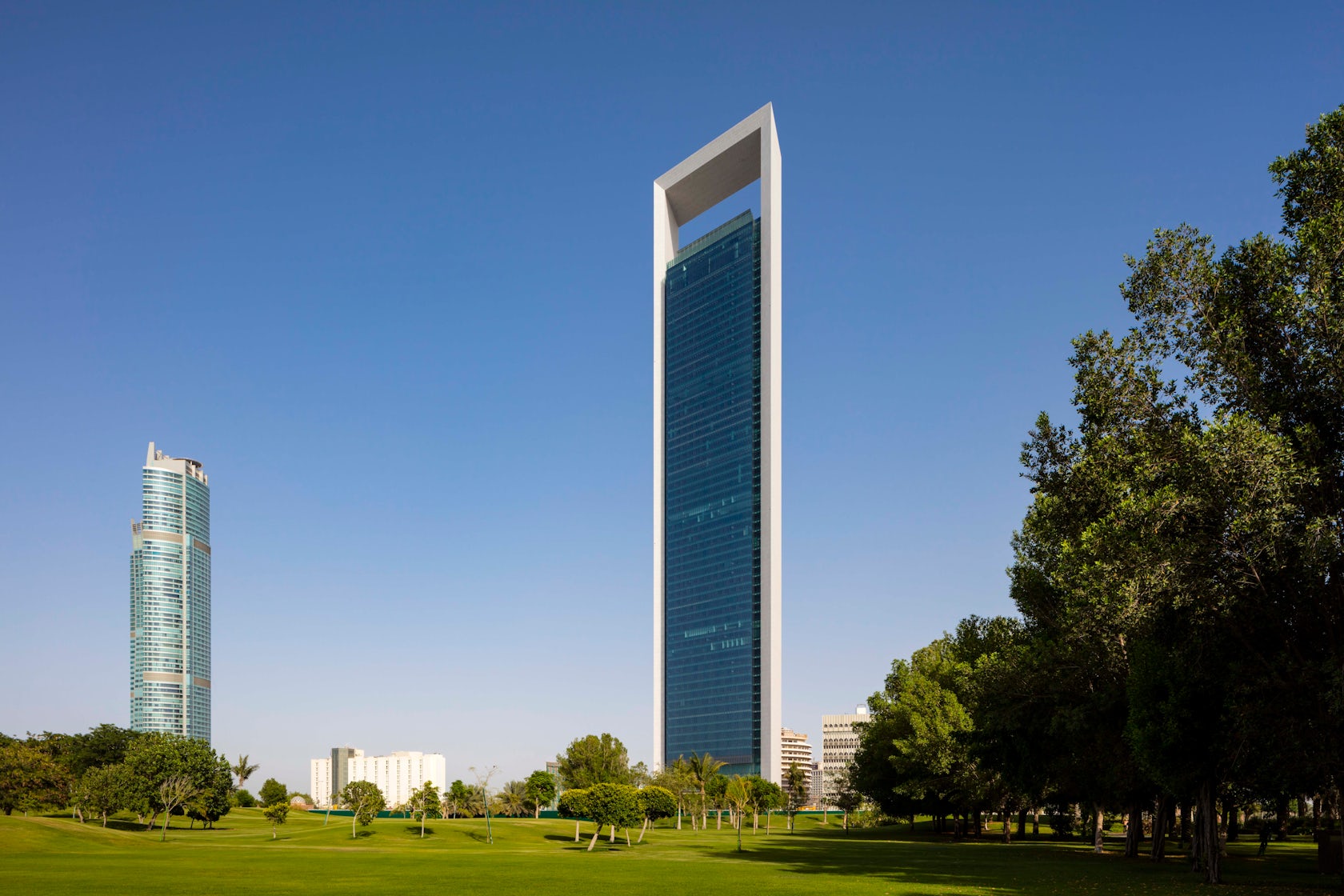Global firm HOK has long been a leader in advocating sustainable practices from its 23 offices spanning three continents. Not only was it one of the first of 400+ firms to date to sign on to the AIA 2030 Commitment — calling for new projects to be carbon neutral by 2030 — HOK is on track to meet 2030 targets ahead of the deadline. It’s a huge step for sustainable efforts coming from such an influential firm, but one that also represents a major challenge to an organization with 1,700 employees and hundreds of open projects. Spearheading that challenge is Director of Sustainable Design, Anica Landreneau, who walked us through her efforts to meet the firm’s ambitious goals, while keeping clients happy and increasing efficiency at HOK.
Maintaining a Culture of Sustainability
In her 10 years working on sustainable design for HOK, Landreneau has already made major advancements toward the firm meeting the 2030 Commitment early. In 2016, HOK managed an impressive firm-wide average of 55% fossil fuel reductions compared to the 42% average from all reporting 2030 signatories. Those reductions span nearly 90 million square feet across the globe and include all project types. “We don’t leave anything out because it’s difficult or inconvenient,” says Landreneau, but HOK’s large portfolio has certainly offered plenty of difficult and inconvenient challenges, including a-typical buildings, differing practices between countries, and getting disciplined data reporting across the firm.


Abu Dhabi National Oil Company’s (ADNOC) new headquarters, Abu Dhabi, UAE
“You make it happen by saying that you want to make it happen,” says Landreneau, speaking to the firm’s rigorous culture that emphasizes sustainability, profitability, and aesthetics in every project. HOK firmly believes that sustainable design can be beautiful and profitable, but achieving that balance requires designers to examine every decision for its impact on performance. For Landreneau, setting targets earlier and continuously benchmarking is key to making the right choices throughout a design, and one of the keytools HOK uses to make that benchmarking more efficient is Autodesk’s Revit plugin, Insight.
Over the last year, Landreneau has overseen a robust roll-out of training across the firm to help architects better use the technology. Insight produces cloud-based models for lighting, cooling, solar PV, and other energy analysis directly from Revit and FormIt Pro. Even better for Landreneau and HOK’s efforts to standardize reporting, Insight automates AIA 2030 success reports, making it easier for her to track HOK’s progress and keep sustainability at the forefront without asking for major time commitments.
Resolving Creative Tensions
Another hurdle Landreneau has seen the firm grapple with in the past is the creative tension between whole building analysis models and early design. “We often want the model feedback before we finish, so that it will inform the design,” Landreneau explains, “but the people running the models are waiting for us to finish the design so that they can finish the model. It’s an unproductive loop.” Landreneau sees increased use of the Insight tool as a way of cutting through that loop, bringing vital information about performance to architects without delay, aiding the development of the Revit model.

The National Oceanic and Atmospheric Administration (NOAA)’s Inouye Regional Center, Pearl Harbor, Hawaii
Designed to open up energy analysis to non-specialists, Insight makes it easy for HOK architects to set parameters and constraints, identifying the highest-performing design options in one simple model that is quick to create. Other energy-modeling solutions require complicated data exports, which take time away from the project and are prone to translation errors. For Landreneau, the ability to create a model without ever leaving Revit can cut the time waiting for analysis from days to just half an hour. These huge time savings make it possible to create sustainable solutions without worrying about meeting deadlines.
Convincing Clients
While architects, designers and engineers working for HOK are already on board with making more sustainable choices, convincing some clients that it’s worth the investment remains an issue. “There may be clients who say ‘I’m OK with just meeting code I don’t need to do better than that’,” Landreneau says.
Previously, without getting approval to access costly whole-building models, it was difficult to show clients the long-term benefits of sustainable design, but Insight’s capabilities don’t come with additional costs and can be shown to clients in real-time — making it easier to change the way they think about sustainability and its long-term savings. “The ability to set a target, achieve it without impacting budget and still have a project that might be 30-40% more efficient than if it had just met code … To me, that’s huge,” says Landreneau, who has seen Insight impress more and more clients and lead them to choose more sustainable options.


The Anaheim Regional Transportation Intermodal Center (ARTIC), Anaheim, Calif.
While Insight analysis has made it easier to communicate why more sustainable design decisions are preferable, it’s also helping clients who want sustainability from the start but fear they can’t afford it. As a 100% Revit firm, all architects at HOK already have access to Insight, which is built-in to Revit 2016 and later.
That gives any architect and any client the ability to examine a wide range of targets affecting building performance, identifying first-cost tradeoffs and big operational savings. Landreneau hasn’t been surprised to get positive feedback on that point from all around: “If you can get a project that achieves first-cost neutrality or first-cost savings, meets high performance targets, and the client gets the payback in operations as well, it’s a win-win-win; everybody’s happy.”

Salt Lake City Airport, Salt Lake City, Utah
Overall, Landreneau has found the data produced by Insight to be fairly close to much more robust whole building models. Having that kind of information easily available to share between teams, contractors and clients is making HOK more efficient and ambitious. For 2017, they’re hoping to achieve a 60% reduction from the AIA 2030 baseline. Landreneau attributes that ambition to the new efficiency Insight is providing: “It’s just really helpful to have that feedback very quickly, so architects aren’t working in the dark. They’re working in a way that’s very informed and helps get us to the right point.”




